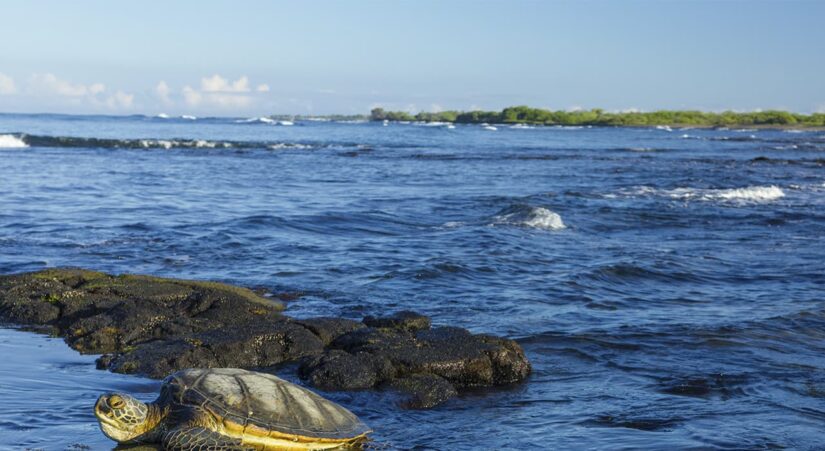Molokai Island
Molokai is the fifth largest island in the Hawaiian archipelago. It is 61 km long and 16 km wide. It has an area of 673.4 km², making it the 27th largest island in the United States. Molokai is separated from Oahu on the west by Kaiwi Strait, 40 km wide, and from Lanai Island on the south by Kalohi Strait. From the western tip of Molokai you can see the lights of Honolulu. The neighboring islands, Laui and Maui, are clearly visible from almost anywhere on the south coast of the island. Molokai is formed by the cones of two volcanoes, Waialu (east) and Mauna Loa (west). The highest point of the island, Mount Kamakou on the eastern volcano, is 1512 m above sea level. The eastern volcano today represents only the southern half of the original cone. The northern half was destroyed in a catastrophic collapse about 1.5 million years ago; debris from the mountain is scattered far north across the bottom of the Pacific. What’s left of the northern half represents the tallest cliffs in the world today.
The south coast of the island boasts the longest fringing reef in the U.S., up to 40 kilometers long. Administratively, the island belongs to Maui County, with the exception of the Kalaupapa Peninsula, which forms its own county, Kalawao. In addition to Molokai, Maui County also includes the islands of Maui, Lana’i, and Kahoolawe. The largest population center on the island is Kaunakakai City. According to the 2000 census, the population of Molokai is 7,404.
The island of Molokai is the main setting for Dan Millman’s book, The Mystical Journey of the Peaceful Warrior. He claims the island is the home of the Hawaiian wizard-kahuna, the sacred site of all Hawaii, where mysterious rituals and ceremonies are performed.
Enjoy sun and ocean at any of Molokai’s beautiful beaches. The island attracts tourists with its secluded beaches (like Papohaku Beach, the largest white sand beach in the entire state). Visit Kawakihau Beach at the northwest end of the island, a perfect example of the seclusion you can find on the island. If you like to camp, the parks near Papohaku Beach and Wan Alii Beach have camping space and are equipped with showers and public restrooms. On Molokai, you’ll find small and large beaches with black and white sand. Surfers are sure to enjoy the winter waves on the west coast of the island. Those who prefer a less extreme vacation are sure to enjoy Murphy Beach and Sandy Beach. Fans of snorkeling will love the scenery of Hawaii’s only barrier species off the north shore.
